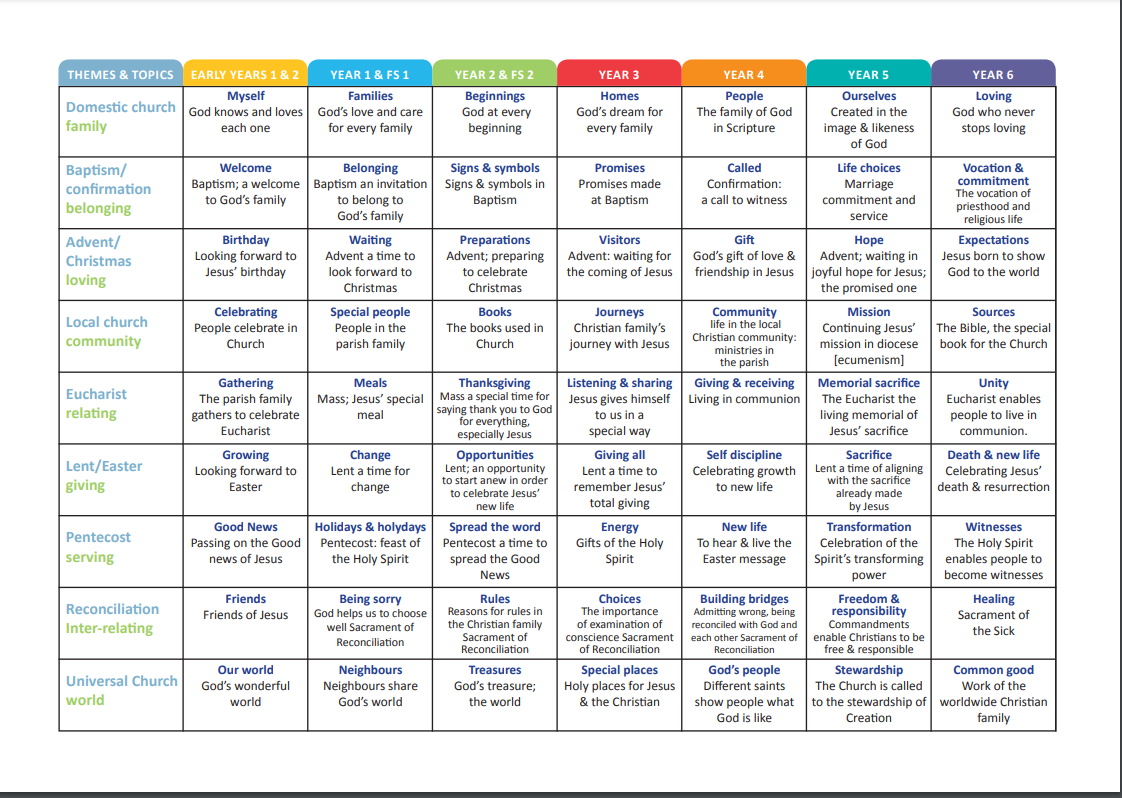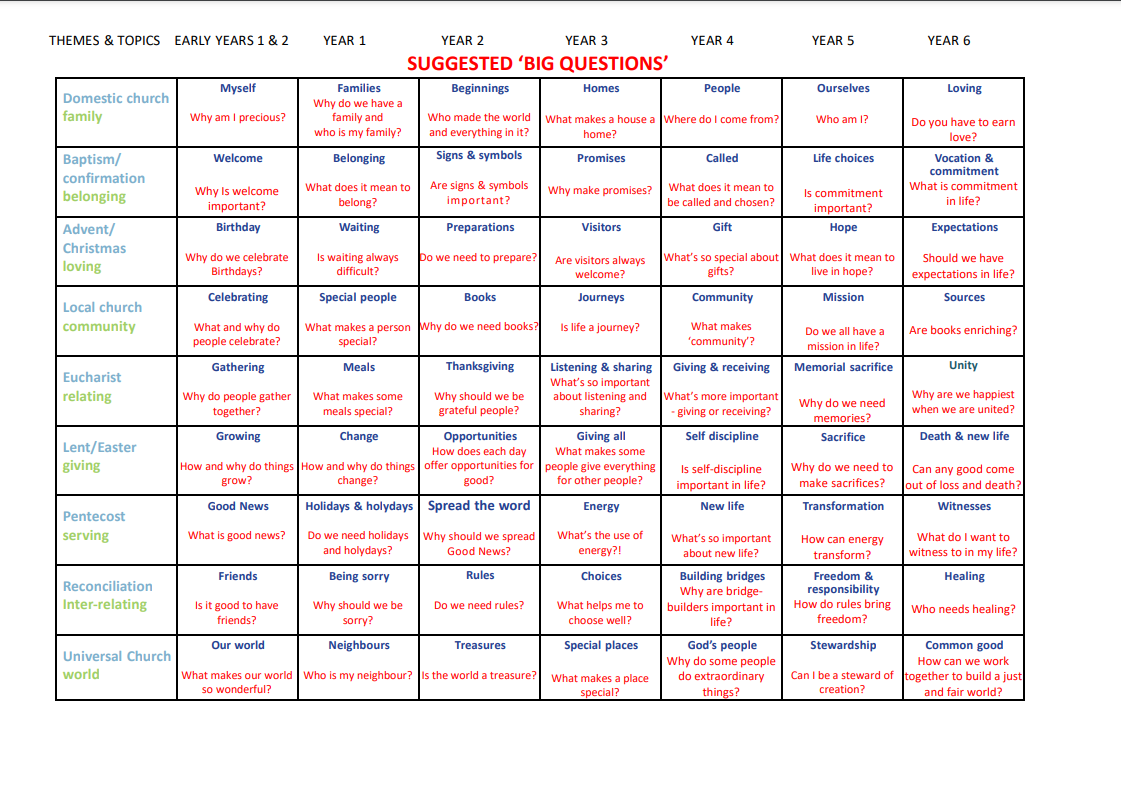{SECTION_MENU
RE Policy
Click on the below link for the RE Policy
RE at SMC

At St Margaret Clitherow Religious Education lies at the very heart of the curriculum and has an important role in reflecting and conveying the distinctively Christian character of the school.
We use a Religious Education scheme called ‘Come and See’ to cover our RE curriculum.
Through the teaching of Religious Education and provision in all areas across school life we follow the Southwark Diocesan requirements;
· To provide for a lived faith experience through worship, assemblies and action for social justice
· Classroom Religious Education is to be taught as a core subject and allocated 10% of teaching time
The aim of the scheme is:
‘To support teachers in Catholic schools and in the wider Christian community in their daily task of unfolding for pupils the mystery of God, the teaching of the Church and its application in daily life.’
Come and See Curriculum Overview


THE USE OF ‘KEY QUESTIONS’ IN RELIGIOUS EDUCATION
One of the main aims of curriculum Religious Education is to promote a knowledge and understanding of the response of faith to ultimate questions about human life, its origins and purpose. The Bishops of England and Wales said, ‘Religious Education is about engaging with deepest questions of life and finding reasons for the hope which is within them’ (Religious Education in a Catholic School, 2000)
In RE we want to provide children with ‘compelling learning experiences’ which demands a more active and engaging approach to learning where children solve something, investigate reasons for things rather than be the mere recipients of knowledge.
By giving the learning in Religious Education direction through the use of key questions, mysteries or puzzles to answer or solve, the curriculum appears much more compelling, imaginative and challenging. A key question should also be relevant to the children’s interests and concerns. Topics such as ‘Rules’ which explores The Sacrament of Reconciliation may not capture the attention and interest of a student in the same way as a question such as ‘How do rules bring freedom?’
It is for this reason that a good approach to the Religious Education curriculum is to use key questions as headings for each unit of work. At the end of each lesson teachers could ask what the children have learned to help them answer the big question. The grid suggests some big questions for each topic. They are only suggestions and schools may come up with their own grid. Teachers may even want to approach each lesson or groups of lessons with a question which will help to answer the big question.
COME AND SEE - THEOLOGICAL STEPPING STONES FOR DOMESTIC CHURCH - FAMILY
Please click on the below link:
RE_Theology_Stepping_Stones.pdf
re theology stepping stones.pdf
 RE Newsletters
RE Newsletters
RE_Newsletter_-_Autumu_Term_2023
RE_Newsletter_-_Spring_Term_2023
RE_Newsletter_-__Autumn_Term_2022
RE_Newsletter_-_Autumn_Term_2021
